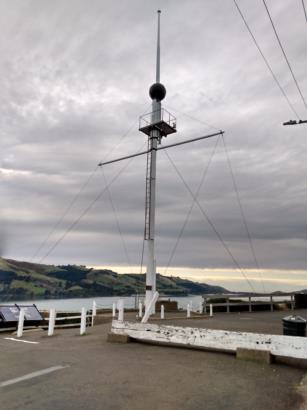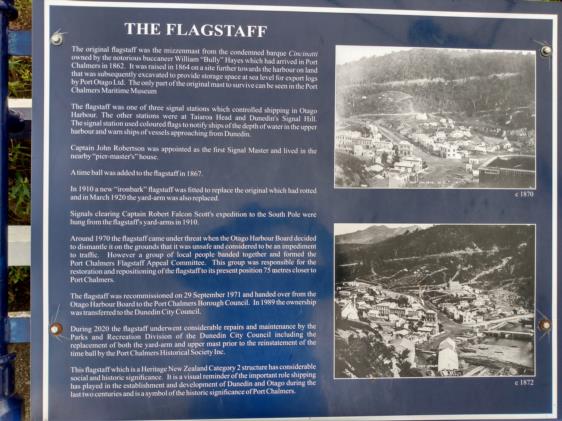
NavList:
A Community Devoted to the Preservation and Practice of Celestial Navigation and Other Methods of Traditional Wayfinding
From: Robin Stuart
Date: 2023 Jun 2, 22:07 -0700
I visited Flagstaff Lookout at Port Chalmers near Dunedin, New Zealand to witness the dropping of the recently reinstated time ball. The port has an interesting maritime museum and is drenched in nautical history. Some examples are
- The hulk of the S.S. Broxton, the world's largest steam ship, lies to the west of the modern container port.
- Having been promised a load of coal and a tow out to sea by the local mayor and coal merchant, Scott departed from here 1910 in the Terra Nova on his ill fated expedition to the South Pole.
- Shackleton's ship Aurora returned here from the Antarctic in 1916 having escaped from the ice pack after laying supplies inland of the Ross Sea in anticipation of Shackleton's arrival from the pole. A party of 10 men had been stranded on shore, 7 of whom were recovered in a rescue mission mounted in 1917.
The time ball was duely raised at 12:55 NZST and at 1pm it descended at a stately controlled rate. This surprised me as I had always thought had that "dropping the time ball" meant just that. A quick drop would presumably be best for accurately setting the chronometers but, on the other hand, bringing a 120kg stainless steel ball to rest after a drop of a couple of metres of so might pose some interesting engineering challenges. Is this time ball historically accurate or a stylistic modern representation? How does it compare to the Greenwich time ball?
Robin Stuart










